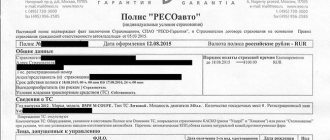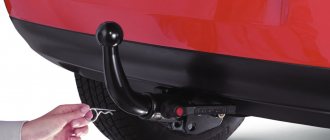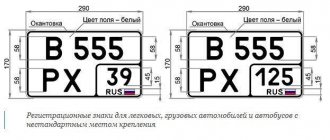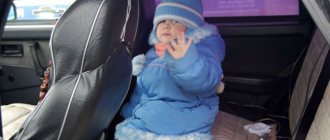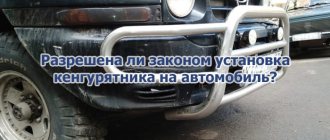Traffic regulations will change in 2021, which was facilitated by the joint work of the Ministry of Transport and the State Traffic Safety Inspectorate. It was these two organizations that worked closely on large-scale projects to make changes to the current traffic rules (traffic rules). Some provisions were not affected at all or only slightly, while in other cases quite significant amendments were made. In particular, the changes most affected the rules for tinting vehicles. In addition, there are some nuances for owners of personal mobility equipment. So the information will be useful not only to car owners, but also to people who do not have classic means of transportation, but also take part in road traffic and will be forced to comply with the new rules. Amendments have also been made to the regulation of the procedure for parking in parking lots, parking lots and for vehicles carrying passengers. It is known that the changes will take effect in 2021, but it is not yet known exactly when. In addition, the project is at the approval stage.
Project to change traffic rules in 2021
New traffic rules began to be developed quite a long time ago - the first amendments were made back in 2021. It was at that time that they first started talking about a project whose goal was to make changes to the original traffic rules, since they practically did not regulate such vehicles as scooters, unicycles and electric scooters, which were becoming increasingly popular participants in the movement, and posed a real threat to attempts to regulate it .
At the end of 2021 (October), the Ministry of Transport worked out a system of adjustments for traffic rules, and also made many small but quite important amendments. When discussing innovations, such important authorities as the traffic police began to make their amendments. The Moscow government and other departments that were interested in obtaining a high-quality result of their work also took part in the discussion. It is not yet known exactly when the amendments under consideration will be implemented, but it is known that it will be 2021, presumably January.
We need to wait until all government agencies accept the finished project . So far, the amendments have already been adopted by the Ministry of Transport, where the documents are now undergoing regulatory procedures. Although there is every reason to believe that the traffic rules will be changed in the future, since the traffic police will still make amendments. The thing is that the department in question is not happy with the fact that scooters, skateboards and other similar vehicles for individual mobility were equated with classic cars and motorcycle transport. That is, they want their owners to remain ordinary pedestrians and not change their status. In contrast to the traffic police, the Ministry of Transport insists that even on a scooter you can accelerate quite quickly, and as a result, hit someone.
Administrative fine for violators of rules for transporting children
Violation of changes in the transportation of children in a car, established by the new edition of the Russian Federation Traffic Regulations, entails the imposition of an administrative fine:
- the driver is issued a fine in the amount of 3,000 rubles;
- officials must pay 25,000 rubles;
- legal entities – 100,000 rubles.
Drivers who leave small children in a car while parked without adult supervision may be subject to an administrative fine of 500 rubles.
Methods for paying traffic police fines online
New rules for riding personal mobility devices
Changes in the 2021 traffic rules concern personal mobility devices, which will have to be introduced into road traffic on a full basis. The new road user receives the name SIM. This is the name given to a device that has one or more wheels, and its movement is provided by a simple engine or muscle power. SIM can be electric scooters, hoverboards, unicycles, and Segways. And if we talk about devices that move by muscular force, these include skateboards, rollers, etc. The scope of SIM regulation does not extend to wheelchairs and bicycles, which are controlled by other measures.
In other words, if a child has an electric scooter, he becomes a full-fledged participant in traffic and must comply with the new traffic rules that will be introduced in 2021. Although previously SIM owners were considered ordinary pedestrians, and until January next year this will remain the case. But after that, if a child under 7 years old receives a SIM card, he will be able to move around on it only if he is accompanied by his parents. Moreover, areas where movement can only be carried out in pedestrian areas, paths, and sidewalks are limited.
Teenagers over 14 years old will be able to ride in lanes designated for bicycles as soon as January arrives. If there are no lanes for bicycles, you can move along the highway on the right. But only if there are brakes, a flashlight, sound signals, a light reflector and other important devices. That is, you cannot be on the road on a standard scooter, roller skates, etc., but traveling on an electric scooter is completely acceptable, provided that all safety standards are met. The maximum speed that can be reached on the road is 60 km/h, and at pedestrian crossings the SIM driver must stop at the appropriate traffic light.
When using a pedestrian zone to move around, the SIM cannot accelerate more than 20 km/h. In addition, pedestrians have higher authority within the movement. But members of the public chamber criticized the clause on speed in the pedestrian zone. Still, 20 km/h is quite a lot and poses a significant risk for pedestrians and SIM owners themselves.
According to the updated rules, which will come into force in 2021, SIM owners are prohibited from:
- before operating a personal mobility device, drink alcohol, medications that can slow down the reaction, etc.;
- ignore the sign prohibiting the movement of bicycles, since this prohibition also applies to them;
- control the SIM while holding the steering wheel with only one hand;
- transport passengers;
- ride the SIM in the dark without using headlights or a special flashlight.
If the SIM owner violates the new traffic rules in 2021, he will face punishment .
This is expected to be a fine. But its size and design features are still unknown. It is only known that the measure under consideration will be supplemented by the Code of Administrative Offences. The police will monitor violators of the new traffic rules, although there is reason to believe that some powers will be transferred to other authorities. For example, Moscow violators will be monitored by the Moscow Administration of the Road Inspectorate, and protocols will be drawn up against them there.
Traffic rules 2021: changes have been made to the traffic rules again
This is the second amendment to the traffic rules this month.
Photo: Andrey GRECHANNIK
July 2021 turned out to be “fruitful” for changes to the Road Traffic Rules (TRAF). First, on July 12, changes were introduced to the rules for transporting children in cars. Now, by government decree (dated July 12, 2021 N 832), new rules are introduced into the traffic rules. Let's take one step at a time and highlight five points.
1. Electric cars are the law
The rules will include definitions of “electric vehicle” and “hybrid vehicle”. Firstly, this is necessary to consolidate such terms, because there are already many such cars, and secondly, for cars that can be charged from an outlet, there will be a number of relaxations. For example, already in Moscow there are chargers for such cars just on the side of the streets. But nowhere does it stipulate who can park near such devices. A Gazelle will stand there, and there will be no use from this charger. To prohibit any cars other than electric and hybrid ones from parking there, special signs and markings are needed. Now they will appear, and it will be possible to mark places for charging electric vehicles with such signs and markings. And for all other cars occupying these spaces, their owners will receive fines for violating parking rules.
Additionally, these environmentally friendly vehicles may be allowed access to some parks or green areas.
Gas stations where recharging electric vehicles is allowed will also be specially marked. But here we are not talking about a ban for others, but about informing about the possibility of connecting to an outlet.
2. “Old men” have no place here
A new definition is being introduced - “Zone with limited environmental class of motor vehicles”. The sign will indicate the environmental class of the vehicle that is allowed to enter this territory. The environmental class of a car is now mandatory; in the Certificate of Registration (CR) and Vehicle Passport (PTS) for each car there must be a column “Ecological class” (immediately after “Engine power”). For example, the sign indicates class “fifth”. This means that you can go with a fifth and older in your documents, but not with a fourth and lower. If in the “Ecological class” column in the documents it is written “Not installed”, or the documents are old and there is no such column at all, then driving is prohibited and the driver will be fined.
The environmental class is now indicated in the documents.
Photo: Andrey GRECHANNIK
Such measures are being introduced to make it possible to limit the movement of old cars, for example, into historical city centers and onto streets adjacent to recreation areas. This is common practice abroad and has reached us as well.
“This means that very soon municipal authorities will be able to organize similar zones with restrictions on the environmental class of the car. For example, cars with an environmental class of less than Euro-3 (i.e., Euro-0, Euro-1 and Euro-2) will be prohibited from entering the center of Moscow, St. Petersburg, etc. I especially want to emphasize that if you don’t have an environmental class registered in your PTS, then that’s your problem, the fine will still come (there’s no fine yet, but it will be 5,000 rubles), says Blue Buckets coordinator Pyotr Shkumatov.
There is now a similar requirement to limit the movement of trucks according to the environmental class.
3. The whole family - on bikes
Family cyclists have been given permission to ride on sidewalks and pedestrian paths. It used to be like this: an adult cyclist (from 14 years old) needs to ride on the road on the right, but not on the sidewalk. Children (under 14 years old) are prohibited from driving on the road; they must move on the sidewalk. What to do if dad, mom and I are a sports family, we all went out on bikes together for a walk, but there is no special bike path? Previously, it was necessary to split up and go according to the rules. Now adults, when accompanied by child cyclists under 14 years of age, can ride bicycles on sidewalks. Cyclists will love this. What about pedestrians?
— Sidewalks in our cities, with the exception of the center of Moscow, are built according to old standards; there is not enough space for pedestrians on them anyway. If cyclists also appear there, this will create a threat to people, because a bicycle travels at a speed of approximately 15 km/h. Cyclists are worried about their safety, but do not think about the safety and convenience of pedestrians, who will simply find it difficult to separate from them, says Vladimir Sokolov, chairman of the interregional public movement “Union of Pedestrians.”
4. Don’t stop buses anywhere
The effect of the “No Stopping” road sign (and corresponding markings) is now extended to route vehicles outside the stop zone of route transport. So that they don’t stand where they shouldn’t. This also applies to taxi drivers - they are not allowed to park under signs prohibiting parking. Please disembark or accept a passenger on board, but do not stand.
5. Tram tracks: a small amendment
A “safety island”, marked with “striped” markings, can now separate not only different traffic flows and lanes for cars or bicycles, but also separate tram tracks. This is just a specification.
The changes will come into force seven days after the day of official publication - we will inform you of the exact date. And we'll tell you about the new rules in detail. We have already discussed the innovations on air on the Komsomolskaya Pravda radio.
KP Auto on Facebook
What will change for motorists
Changes in traffic rules from January 1, 2021 will affect not only owners of electric scooters, roller skates, etc., but also motorists who own vehicles, therefore, while moving on the road, they must constantly adhere to the rules. The first change that will directly affect motorists is that it is forbidden to stop at traffic islands, where previously it was possible to safely park a car.
The next change that next year will bring us is the end of the “No Stopping” sign as soon as the “Parking” sign comes into view. The specifics of the operation of the “No Parking” sign are also changing. According to the new rules, its validity will end from the final point of the village or to the intersection.
All this leads to the fact that from January it will become more difficult for motorists to navigate, and they will have to learn several more new rules. In addition, the new rules will not be learned immediately, so there is a risk that due to violations regarding innovations, the number of fines will increase.
New requirements for first aid kits for next year
According to the new rules, in 2021, drivers will be able to use a first aid kit and a fire extinguisher of any type. Previously, drivers had the opportunity to use only approved means, the list of which was approved in 1996.
New tinting rules
According to the new traffic rules that will be implemented in 2021, starting in January, all windows in a car can be tinted, but it is important that the front and side windows are tinted to allow at least 70% of light to pass through. The remaining windows can be tinted with any light transmittance factor.
Previously, this parameter was controlled more strictly. For example, the rear windows had to transmit at least 70% of the light, and the front 75%. These standards were introduced back in 1988.
Other changes
When leaving the surrounding areas, from January 1, the driver of the car will have to let not only pedestrians pass, but also people riding electric scooters. The exact same circuit will be used when the car leaves the road. If this rule is not followed, you will pay a fine.
Transporting the youngest passengers by car
Transporting infants in a car has some special features. A special infant carrier is provided for them, installed on the rear row seats. It is secured using standard car seat belts perpendicular to the movement of the vehicle. Inside the cradle, the small passenger is secured using belts that hold the child.
Due to the design features of the restraint device, the child’s position in it is horizontal, which normalizes the baby’s breathing and protects his fragile bones from excessive stress. The car cradle is designed for transporting children up to six months of age. Such a device requires a lot of space, so a car seat can serve as an alternative.
Inside such a chair, the child is additionally held in place by special belts. The seat itself is secured using the included brackets or car seat belts. The level of backrest tilt can be adjusted; it should be within 30-45 degrees. In the event of a frontal collision, the child's protection will be maximum. In this position, the chair perfectly holds the baby's head and minimizes the load on the neck.
Related links: Methods of paying traffic police fines via the Internet
What will change for bus drivers?
Buses are the same members of the road traffic, but they have a higher responsibility, since this transport carries many people. According to the new rules, the bus can be accelerated to 90 km/h, as before. But there is a nuance - such acceleration is possible only if the vehicle is equipped with seat belts on all seats, and there should be no standing places. If this is not the case, the maximum speed in 2021 will be no more than 70 km/h.
There will also be restrictions on parking in residential areas, but only if there is no special parking there. Previously, the new rule under consideration applied only to freight transport, and passenger buses were not included in this list. Vehicles used to transport children must be equipped with special icons - orange beacons.
The next change in traffic regulations in 2021 will concern the introduction of another sign indicating a ban on bus traffic, for ignoring which a fine will be given. The “Attention Passenger” icon will also light up on the bus. But drivers of passenger cars should pay attention to this sign. They must stop and wait while passengers get off the bus. But you can drive only after the driver turns off the sign.
You'll have to give up your driver's license for tinting your windows.
Those who like to tint their car windows should pay attention to some amendments to the traffic rules, which determine the conditions acceptable for tinting and changes in the procedure for imposing penalties. Thus, the legislator does not prohibit darkening car windows, but this must be done subject to a number of conditions. The percentage of light transmission of the windshield should not fall below 75, the percentage of light transmission of all other glass should not fall below 70. In order to force drivers to comply with these rules, the legislator has significantly tightened penalties for improper tinting. If a driver is caught committing this violation for the first time, he will be issued a fine of 500 rubles; for a repeated violation, the fine increases tenfold, to 5,000 rubles.
The most dull ones will have to part with their driver’s license for half a year after the third arrest.
Source
Changes in traffic rules for pedestrians
Traffic fines for 2021 will need to be paid by pedestrians who have received a new status and must learn more than one new rule. You will have to learn new rules, and pay a fine for failure to comply. What’s new is that pedestrians will have to give way to new road users, but only if they are moving along a bike path or when crossing it. You can cross the road only if there are signs for above-ground and underground pedestrian crossings. If there are no signs, the classic traffic rules apply, and not those introduced in 2021.
New traffic signs
After the advent of SIM, the traffic rules for 2021 have changed, and new signs are used to indicate each change. Each one introduces a new ban or restriction, but allows traffic participants to figure out how to behave correctly on the road and not get a fine for breaking the rule. The signs for electric scooters and other vehicles included in the SIM category look like this. You need to remember them to avoid fines.
Other changes in 2021
January next year marks major changes in traffic rules. One of the most noticeable was the use of the sign “Zone with limited environmental class of vehicles,” which was introduced earlier (since 2021), but now its area of influence has been expanded. Its coverage area may include gas-powered vehicles, as well as people who live in the area in question.
There is also a new sign that shows where you can charge an electric car. And one more innovation is a new color scheme for road markings, which has been adopted by road services as a rule. Now green, blue and red are used. Each color means something different. Thus, blue is used to mark intersections. Other colors can duplicate other signs.
When the road repairs are completed, the additional signs will be removed and the temporary markings will be washed away. If this is done late or not done at all, you can complain to the traffic police, after which the road service will not only be fined, but may also use other sanctions.
Where should a child car seat be installed?
The child's car seat can be installed either in the back or in the front seat. The adopted changes in the transportation of children in a car do not prohibit this. However, a prerequisite is to turn off the airbag, since if activated, it can cause irreparable harm to the child. If a passenger who has reached the age of twelve is carried in the front seat, then the airbag must be active. The main element of protection here is seat belts. The best place for a child car seat is in the center rear seat. Statistics show that it is the safest, so it is perfect for transporting children.
Do you support increased control over the transportation of children in cars?
Related links: How to check the ban on traveling abroad?

